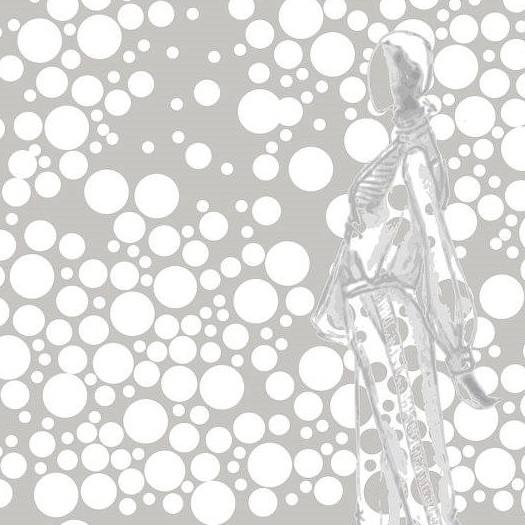by Alice Beyer Schuch – Feb/2017
This article was firstly written by Alice Beyer Schuch, for Slow Fashion Next (in Spanish), in her role as lecturer of the online course “Circular Economy and New Fashion Businesses“.
In many schools, it is still taught that a product is manufactured for its final destination in a store, ending at the consumer purchase. Period. The End. But what is happening is that this linear way-of-thinking has being (and must be further) questioned. Concepts of Circular Economy and new perspectives on the way things can be done, I can say, encourage the exchange and reuse of products – what I call here the We-conomy.
Since the last 20-30 years, the way fashion has developed and consumed has dramatically escalated and accelerated – as a society we purchase 400% more clothing today than we did just 20 years ago.* All this supported by a drastic reduction in the prices of products, subsidized by people and nature. We have created the need to have (the car of the year, the latest generation phone, the biggest fancy TV) the last-trendy fashion garments – although our style, personality and needs do not change so quickly.
But… easy come, easy go!
The low prices made us lose the notion of the value of each item we acquire, and consequently, we throw them away with no trouble, without any sorry or regret.
Some companies perceived value in that (“old garments”) and began to work with these discards, that already belonged to somebody, but still have, in itself, a lot of value. In the 90’s second-hand stores started working on the idea of reselling unwanted clothes that could still be worn. They were small shops, usually located in simple neighborhoods, which offered garments and accessories for lower prices than the market and so served more to a client with financial constraints that, really, with fashion interests – anyways, a first model of the We-conomy. But then fast-fashion emerged and trend fashion became something affordable for many. Clothes became disposable in some cultures and with that, new fashion businesses based on it appeared to be interesting and why not, lucrative.
Oh! You don’t want your garments anymore? Give them to us!
This way, the collection systems of used clothes began – in collaboration with brands and retailers that promised to give a better destination to our garments than the garbage bin. Since 1994, the German SOEX group collects garments, selects them and destines them to other markets and purposes. Currently, its second-hand garment market serves more than 90 countries and textiles are recycled for different purposes – from blankets, to insulation material, to new fibers for fashion. You’ve probably already seen the I: CO (SOEX group) collecting boxes over there…

Consequently, based on donations of clothing by costumers – for free or for a small voucher – the resale of used clothing showed a lucrative business model. By 2014, about 30% to 40% of used clothing collected in the US and Europe was sold second-hand abroad. In the US alone, export turnover in this area moves about $ 12 billion a year.**
Parallel to this giant activity, regional and independent initiatives have also emerged and shown their value. New platforms, communities in social networks, and new apps are increasingly effective in re-targeting garments that we no longer want. Websites such as Chicfy (ESP), Enjoei (BRA), or Kleider Kreisel (DEU), to mention a few, offer the possibility of buying or selling items – among them, clothing, accessories, shoes, and beauty products – new or used, for a much more conscious community. An up-to-date form of the second-hand stores of the 90’s. In the best style:
What is old for you may be new to me!
But, wait a moment, why should we, at the end, own a garment? We could start thinking on ownership of garments in the We-conomy taking uniforms. Does any company really need to own it? One example tackling it is Dutch aWEARness, which offers uniforms development and rental service to companies, who return them after the set time of use. Thus, Dutch aWEARness remains the owner of the garments, and because it has strict processes control and traceability, items received back are easily identified, separated and re-addressed for reuse or recycling. Shouldn’t schools do the same? Airline companies? Hotels and hospitality sector? Municipalities?
The same idea can already be seen in a personal sphere. Shared wardrobes (or libraries) such as Kleiderei (DEU), or Lena (NDL) allow us to change style constantly without the need of owning everything we want to wear. And better, by sharing them, we reduce the need to buy new items, as well as the tension over the extraction of natural resources, in addition to reducing the environmental impact in each use, thus increasing its utility index.

Briefly, the We-conomy in fashion reaches concepts that allow to use and reuse something that belonged or even belongs to others, such as (but not only) collection systems; resale, exchange and reuse of products; the offer of products-as-services; and mainly, the reevaluation of the concept of property. Questions such as “what is our ultimate goal for buying fashion?”, or “is it fundamental to have something new, or can we change, share, collaborate, exchange?” are the starting point here.
Whether in a small and personal scale or in larger proportions, the We-conomy in Circular Fashion is there to be applied as a way of getting more and more items diverted from its most unwanted final destination: the landfill.
References:
*Fashion Revolution White Paper. Dec 2015
**Ellen MacArthut Foundation.Towards the Circular Economy Vol.3, 2014.


2 thoughts on “The “WE-conomy” in Circular Fashion”